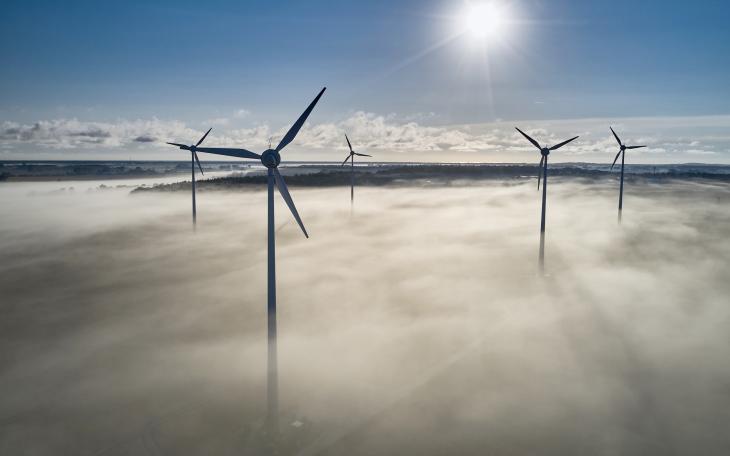A breezy future for onshore wind production

In 2015, the Government effectively banned onshore wind development in England, which was recently overturned by the current Government along with a new target to double the onshore wind capacity by 2030.
A variety of surveys, including our own, have shown that the population is widely supportive of the development of renewable energy to reduce carbon emissions and fight against climate change. Why is onshore wind different? At the risk of being obvious – wind turbines are tall, and increasingly so. The highest wind turbine in England is currently 492 ft in Bristol, but the industry continues to move taller and taller to capture more energy, now up to 653 ft in Denmark. This means they can be seen from great distances, which creates a significant negative impact (in EIA terminology) for the communities around them—but of course, beauty is in the eye of the beholder.
To better understand how the community would feel about a return to onshore wind development, we conducted a round of research over the summer. While we will be releasing the full results soon, as a sneak peek we can share that a majority were supportive - 53% of those asked were positive about the decision to remove the ban. Furthermore, 59% felt that it would be acceptable for a wind development in their local area.
While it’s helpful to know that the community is largely supportive of the move to bring back onshore wind development in England, there are still a number of questions around how onshore development will work, what will be the planning framework (local or national?), and how the industry has or should have changed in the nearly decade-long ban. For some of these, we can look to our colleagues in Scotland, where there wasn’t a ban and onshore wind has continued to develop.
In Edinburgh this week, onshore wind developers, consultants and industry groups gathered to discuss the future of the sector at the Onshore Wind Conference, hosted by Renewable UK. This marked the first anniversary of the Scottish Onshore Wind Sector Deal – which sets the expectations for onshore wind projects in Scotland and serves as a good indicator of expectations for development in England. There was a lot of discussion around the topic of community benefits – the expectation of a standardised benefit package set at a certain number of pounds per megawatt- as well as the shift towards community-owned assets. There were also a number of new faces, as the conference highlighted SME innovators, particularly those looking at how to recycle the infrastructure which is coming to the end of life and repower existing infrastructure.
There is still much work to be done to realise the ambitious goals for Clean Power by 2030. We public sentiment is in favour of the development of renewables, and onshore wind in particular, but a lot remains to be seen about how new projects can and should be developed going forward. Overall, it was refreshing to see an industry that is keen to share the lessons learnt and work together to deliver the clean energy we need.









